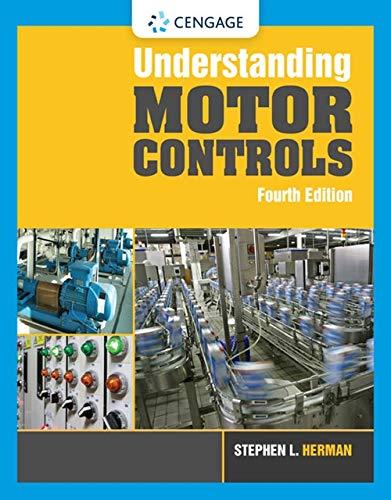
Concept explainers
(a)
Estimate the density of a
(a)
Answer to Problem 56SEP
The density of copper and nickel alloy is
Explanation of Solution
Express the density of alloy.
Here, density of copper and nickel is
Conclusion:
Write the density of copper and nickel and also write the number of atom per mole or Avogadro number.
Write the molar or atomic mass of copper and nickel.
Substitute
Hence, the density of copper and nickel alloy is
(b)
The most probable crystal structure for this copper and nickel alloy.
(b)
Answer to Problem 56SEP
The most probable crystal structure for this copper and nickel alloy is FCC.
Explanation of Solution
Write the information data for copper and nickel as in Table (1).
| Element | Crystal structure |
| Copper | FCC |
| Nickel | FCC |
As both of the copper and nickel have similar FCC crystal structure, then the formed alloy will also have the FCC structure.
Hence, the most probable crystal structure for this copper and nickel alloy is FCC.
(c)
The mass in grams of the atoms inside a unit cell of the copper nickel alloy.
(c)
Answer to Problem 56SEP
The mass in grams of the atoms inside a unit cell of the copper nickel alloy is
Explanation of Solution
Consider the mass of alloy as
Express the total atoms of copper.
Here, atomic mass of copper is
Express the total atoms of nickel.
Here, atomic mass of nickel is
Express the mass in grams of the atoms inside a unit cell of the copper nickel alloy.
Conclusion:
Consider the mass of the alloy be
Substitute
Substitute
Thus from Equations (V) and (VI), it is observed that there are
Substitute
Hence, the mass in grams of the atoms inside a unit cell of the copper nickel alloy is
(d)
The lattice constant for the copper nickel alloy.
(d)
Answer to Problem 56SEP
The lattice constant for the copper nickel alloy is
Explanation of Solution
Express the lattice constant for the copper nickel alloy.
Conclusion:
Substitute
Hence, the lattice constant for the copper nickel alloy is
Want to see more full solutions like this?
Chapter 4 Solutions
Foundations of Materials Science and Engineering
- 3. BCC Li has a lattice parameter, ao, of 0.35089 nm and contains 1 vacancy per 300 unit cells at 200 C.a) Calculate the number of vacancies/cubic centimeterb) For the number of vacancies given in the problem statement (i.e. 1 vacancy per 300 units cells), determine the corresponding density of the Li sample.arrow_forwardTin atoms are introduced into an FCC copper crystal, producing an alloy with a lattice parameter of 3.7589 3 10–8 cm and a density of 8.772 g/cm3. Calculate the atomic percentage of tin present in the alloyarrow_forwardThe density of a sample of HCP beryllium is 1.844 g/cm 3 , and the lattice parameters are a 0 = 0.22858 nm and c 0 = 0.35842 nm. Calculate (a) the fraction of the lattice points that contains vacancies: and (b) the total number of vacancies in a cubic centimetre of Bearrow_forward
- Calculate the number of vacancies per cubic meter for some metal, M, at 811°C. The energy for vacancy formation is 0.89 eV/atom, while the density and atomic weight for this metal are 6.96 g/cm3 (at 811°C) and 55.72 g/mol, respectively.arrow_forwardExplain why martensite is hard? What is the crystal structure of martensite? Show the positions of carbon atoms in unit cell of martensite.arrow_forwardGiven that molybdenum (Mo) with atomic weight 95.94 g/mol and density 10.2 g/cm3 assumes a body-centered cubic (BCC) crystal structure, estimate its atomic radius in pm.arrow_forward
- What is the angle between the [200] and [200] directions in a lead with an FCC crystal structure?arrow_forwardquestion j620 Find the Miller indices of each crystallographic planearrow_forwardHow many vacancies per cubic centimeter are there in gold, at ambienttemperature, assuming a lattice parameter of 0.408 nm? Gv = 1.4 × 10−19.arrow_forward
- a. For a FCC crystal, list all the planes in the {1 2 1} family. b. Would you expect a family in a face-centered orthorhombic (FCO) crystal to have more or fewer planes than the same family in a FCC crystal? Explain your answer.arrow_forwardWhat is the atomic radius of nickel (in A) if it follows an FCC crystal structure, given that Nickel has a density of 8.9 g/mL and an atomic weight of 58.7 g/mol. Solution please. Thankyouarrow_forwardSketch the variation of the vacancy concentration as a function of temperature in iron and mark all salient features on your sketch. The melting temperature of iron is 1539 oC.arrow_forward
 Understanding Motor ControlsMechanical EngineeringISBN:9781337798686Author:Stephen L. HermanPublisher:Delmar Cengage Learning
Understanding Motor ControlsMechanical EngineeringISBN:9781337798686Author:Stephen L. HermanPublisher:Delmar Cengage Learning
